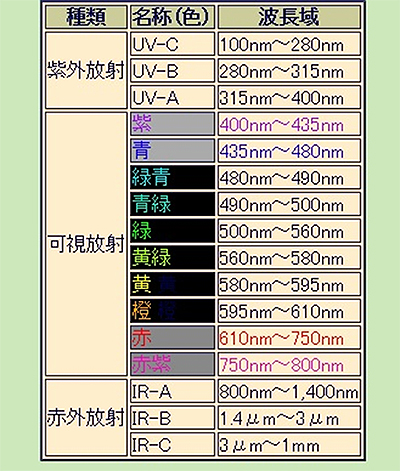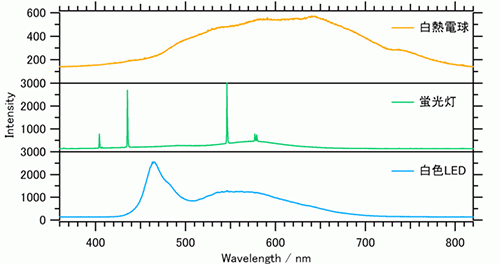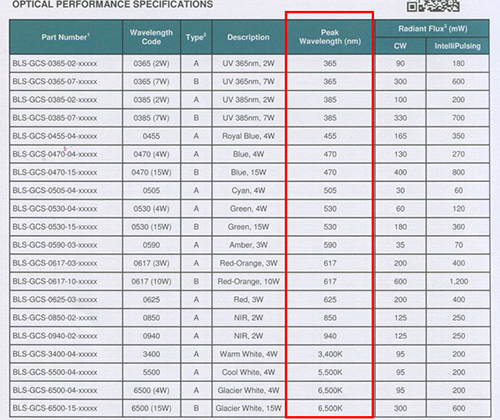Visible light is the portion of the electromagnetic spectrum that can be perceived by the human eye. Generally, wavelengths ranging from approximately 380nm to 750nm constitute visible light. Wavelengths shorter than this range are classified as ultraviolet, while longer wavelengths are classified as infrared.

The color of light varies according to its wavelength. Since perfectly monochromatic illumination does not exist, the actual color is determined by the wavelength range with the highest intensity.

Illumination used for luminescence experiments, as opposed to general lighting, is sold with precisely defined wavelength peaks.

In simple luminescence experiments and line inspections, black lights are sometimes used. A black light emits long-wavelength ultraviolet radiation that is barely visible to the human eye.
Incidentally, our ultraviolet irradiation device emits light with a peak wavelength of 365nm, while our yellow LED illumination peaks at 589nm, red LED illumination at 624nm, and blue LED illumination at 463nm.







